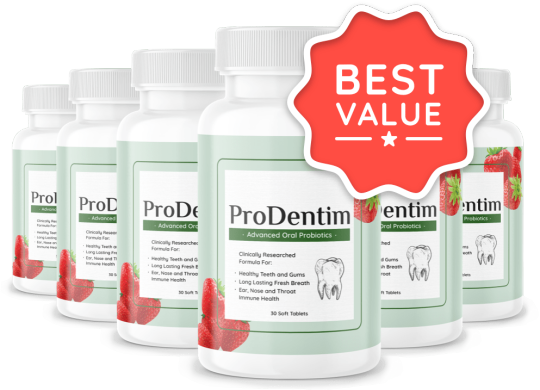#Sugar Pill Cosmetics
Text

my makeup for a pride makeup contest
#pride makeup#editorial makeup#creative makeup#cloud makeup#aura makeup#sugar pill#like crime#lime crime#urban decay#mac cosmetics#nyx#photography#portrait photography
5 notes
·
View notes
Text
Women's Health: Daily habits that could be affecting your hormones
Hormones play a central role in the proper functioning of your body and overall health. They affect your menstrual cycle, fertility, bone health, mental and physical health. Your skin, weight, thyroid, energy levels, heart and breast health and much more.
These are some common habits that can influence hormonal balance:
Sleep: Irregular sleep can disturb hormone production, like cortisol, insulin, and growth hormones.
Diet: Eating lots of processed foods, unhealthy fats, and sugars while lacking essential nutrients can lead to hormonal imbalances. Extreme diets can also harm hormones.
Stress: Chronic stress releases cortisol, disrupting other hormones in the body.
Exercise: Too much or too little exercise can impact hormone levels. Overtraining raises cortisol, while being sedentary affects insulin sensitivity.
Caffeine and alcohol: Consuming too much caffeine or alcohol can affect hormone production and the endocrine system.
Plastic usage: Some plastics contain chemicals that disrupt hormones, especially when they leach into food and drinks.
Skincare and household products: Harmful chemicals in skincare and household items can act as hormone disruptors.
Medications and contraceptives: Some medications and birth control methods alter hormone levels.
Smoking: Smoking and secondhand smoke can disrupt hormones.
Environmental toxins: Exposure to pollutants like pesticides, herbicides, and chemicals in the environment act as endocrine disruptors, affecting hormone production and function.
Hydration: Staying hydrated is vital for hormone secretion and function.
Sunlight exposure: Natural sunlight helps regulate circadian rhythm and melatonin production, impacting other hormones.
Social interactions: Loneliness and social isolation affect hormone production and stress hormones.
Water bottles and food containers: Bisphenol A (BPA): Found in plastic bottles and containers, BPA can disrupt hormones when it seeps into food or drinks.
Laundry products: Some laundry products have chemicals that act as EDCs, impacting hormone balance through skin absorption.
Synthetic fabrics: Fabrics like polyester can cause increased sweating and heat retention, potentially affecting hormones.
Personal care products: Certain cosmetics and shampoos may contain harmful chemicals that interfere with hormone levels.
Intermittent fasting: Extreme fasting or calorie restriction may disrupt hormonal balance for some individuals.
Gut health: A healthy gut, supported by a balanced diet and probiotics, positively affects hormone metabolism.
Birth control methods: Hormonal contraceptives, like pills, patches, or IUDs, can influence hormone levels and affect individuals differently.
#healthy living#health and wellness#womens health#women health#healthyhabits#healthy lifestyle#hormones#self care
420 notes
·
View notes
Text
Sugar and spice and drugs and withdrawal and pills and estradiol cypionate and estradiol valerate and needles and blood and throwing up and cigarettes and scratched fingers and bruises and track marks and running makeup and smudged lipstick and shaving cuts and razor bumps and cream concealer and clothes from the girls section and hoodies from a guy who will never call back and Myspace songs and unprofessional ear piercings and extra skinny jeans and diet coke and regular cocaine and chipped nail polish and cosmetic surgery and inpatient stays and a soul deep longing to be wanted, that's what pretty girls are made of
#the bitch is back#and they kind of went wild#girl mikey#and give me all your pills#regular and normal eating habits
7 notes
·
View notes
Text


By: Leor Sapir
Published: Aug 25, 2023
The New York Times has published a new investigative report on the pediatric gender clinic at Washington University in St. Louis, home of case-manager-turned-whistleblower Jamie Reed. Last February, Reed alleged in The Free Press that her former clinic was harming adolescents with invasive and unnecessary treatments. “What’s happening to children,” she said, “is medically and morally appalling.”
Reed tried to raise her concerns with her superiors at Washington University but was shut down. She decided to file a sworn affidavit about the medical abuses she witnessed with the Missouri attorney general, an action that triggered a multiagency investigation that remains ongoing.
The Times’s article represents the first attempt by a major left-of-center newspaper to corroborate Reed’s claims. The author, Azeen Ghorayshi, says that “some of Ms. Reed’s claims could not be confirmed” and that “at least one of her claims included factual inaccuracies.” On the whole, however, Ghorayshi corroborates much of what Reed has said about her former clinic. Most important is the clinic’s disregard for clear “red flags.” Adolescents with serious mental health problems were prescribed puberty blockers or cross-sex hormones when they should have received mental health support.
Ghorayshi and the Times deserve credit for a well-researched article. Ghorayshi does a good job allowing different sides in the controversy to be heard. Her discussion of the medical research, though not the focus of her article, is refreshingly honest and accurate. Considering the pressure exerted on the Times and its reporters by transgender advocacy organizations like GLAAD to toe the ideological line, it takes courage to write a piece as rigorous and as thoughtful as this one.
And yet, the article has problems. Two in particular stand out. The first concerns the question of satisfaction and regret, and the second involves the role of mental-health interventions in pediatric gender medicine.
If the reader comes away from the Times piece feeling ambivalent about the St. Louis clinic, that is because Ghorayshi contrasts Reed’s allegations of wrongdoing with stories of families who say they are satisfied with the treatment their children received there. “It’s clear the St. Louis clinic benefited many adolescents,” says Ghorayshi.
But is it?
As a matter of principle, it is wrong to use satisfaction and regret as the benchmark for judging whether pediatric sex trait modification (PSTM) is a medically necessary and ethical practice. If medicine is to retain its authoritative role in human affairs, patient satisfaction alone cannot determine when interventions are medically necessary. Self-reported satisfaction is how we judge cosmetic procedures, not medically necessary ones. The role of the doctor is to heal, not please. Pleasing, though not unimportant, is secondary and subordinate to healing. Bitter pills are coated with sugar to make pleasing to patients, but it doesn’t follow that sugar is good for you or that doctors should encourage patients to eat it to their heart’s desire. Failure to distinguish the pleasant from the good can result in serious iatrogenic harm. More broadly, it can corrupt medicine and reduce it to mere consumerism.
Ghorayshi is right to take interest in the satisfaction of patients and families who attended the St. Louis clinic. But to leave it at that and to imply that patient satisfaction is a valid counterargument to Reed’s allegations is to miss the far deeper and more significant ethical issues involved. Worse, it’s to take a side in that ethical debate without presenting the competing arguments in a serious way.
I’ve written in the past about the vital importance of providing readers with context about the satisfaction/regret question, especially when it comes to how we think about the St. Louis clinic. If journalists contribute to the public’s (misguided) belief that short-term satisfaction of distressed teenagers with drugs and surgeries is ultimately what matters, they should at least mention that the validity of this framing is itself a key part, if not the heart, of the scientific and medical debate over PSTM.
Research in gender medicine has found no necessary relationship between subjective satisfaction and more objective measurements of mental health and psychosocial functioning. One of the first follow-up papers on gender medicine published by Dutch clinicians in 1988, right around the time they began experimenting with hormonal interventions in adolescents, reflected on the question of subjective versus objective measurements of improvement. The paper acknowledged “a trend” in existing research on adult transsexuals at the time: “the subjective well-being of the transsexuals has increased, whereas an ‘improvement’ in their actual life situation is not always observed.”
A 2020 study by Finnish gender clinicians in the Nordic Journal of Psychiatry did look at more objective outcome measures. To assess whether hormonal interventions are beneficial, the authors used “proxies for adolescent development” including “age-appropriate living arrangements, peer relationships, school/work participation, romantic involvement, competence in managing everyday matters and need for psychiatric treatment.” The researchers found that patients “who did well in terms of psychiatric symptoms and functioning before cross-sex hormones mainly did well during real-life. Those who had psychiatric treatment needs or problems in school, peer relationships and managing everyday matters outside of home continued to have problems during real-life.” Thus, “Medical gender reassignment is not enough to improve functioning and relieve psychiatric comorbidities among adolescents with gender dysphoria.” Presumably, most of the patients were satisfied with their treatment.
The pivot in PSTM research from objective to subjective metrics may reflect an exasperation of the field with trying to find good, causal evidence of improvement in mental health and psychosocial functioning. It may also reflect the true but rarely acknowledged purpose of sex-trait modification, which is to achieve “embodiment goals,” i.e., desired cosmetic outcomes.
Let’s assume, however, that satisfaction/regret is the appropriate benchmark for evaluating the ethics of PSTM. What does the empirical literature tell us about satisfaction and regret from hormonal or surgical interventions? “The number of people who detransition or discontinue gender treatments is not precisely known,” Ghorayshi observes. “Small studies with differing definitions and methodologies have found rates ranging from 2 to 30 percent.”
Ghorayshi is correct. Given the poor quality of research in this field, we do not currently know the true rates of satisfaction and regret among adults who transitioned as adults. Still less do we know about regret and satisfaction in those who transitioned as adolescents. Another problem with relying on satisfaction—especially when, as is often the case in this field of research, follow-up happens mere months after procedures—is that it may be confounded by placebo and Hawthorne effects. (The latter term refers to “the phenomenon where clinical trial patients’ improvements may occur because they are being observed and given special attention.”) Rigorous long-term data, which is more important than short-term data when it comes to adolescent decisions, will take at least another decade to collect and analyze.
Also missing from the Times piece is any serious treatment of the question of harms. Ghorayshi implies that detransitioners were harmed, but in her sworn affidavit Reed documents several instances of harm suffered by patients receiving gender-transitioning care that go unmentioned in the Times piece. These include a teenage girl who experienced bleeding vaginal lacerations following testosterone injections (a known side-effect) and another girl whose clitoris got so large from taking the androgenizing hormone that it painfully chafed against her underwear when she walked.
After conducting an internal investigation, in which it never bothered to interview Reed, Washington University reported that it did not find evidence of any “adverse physical reactions” among those treated at the gender clinic. Not a single case.
Considering how hard this is to believe, it would have been appropriate for Ghorayshi to probe deeper into this matter. Medical treatment decisions by their very nature require balancing benefits against harms. At a time when Americans need to hear the truth about what is known and not yet sufficiently studied about the side effects of these powerful drugs, Ghorayshi’s piece comes across as somewhat sanitized. Ghorayshi mentions 18 patients and families who say that they had “overwhelmingly positive” experiences at the St. Louis clinic, one patient—Alex—who discontinued testosterone after “realiz[ing] she was nonbinary,” and a file compiled by Reed and her coworker that documented 16 instances of detransition. What do these numbers tell us? The answer: close to nothing. The St. Louis clinic apparently had 613 patients who were medicalized during the relevant timeframe (Ghorayshi mentions 598, a number she takes from Washington University’s internal investigation, but Reed’s documents show otherwise). Since we don’t know the fate of the other patients, it’s impossible to draw any conclusions about the overall rates of regret or satisfaction. But again, whether most patients at the St. Louis clinic are satisfied or not is no rebuttal to Reed’s allegations. Using subjective satisfaction as the sole metric is reasonable for cosmetic procedures, but not for “medically necessary” ones.
This brings us to the second problem in the article. “The turmoil in St. Louis,” Ghorayshi writes, “underscores one of the most challenging questions in gender care for young people today: How much psychological screening should adolescents receive before they begin gender treatments?”
The key word here is “before.”
Ghorayshi’s question seems to suggest that the debate between Europe and the U.S. is over how much mental-health screening and counseling to offer adolescents before putting them on a medical track. In truth, the European countries have adopted an approach that emphasizes, for most gender dysphoric adolescents, mental health support instead of hormones.
Though she notes the divergence in medical policy in Europe versus the U.S., Ghorayshi doesn’t fully explain the nature of this divergence and understates its extent. True, Europe hasn’t banned hormonal interventions altogether. But if the restrictions now in place in Finland, Sweden, and Denmark (the situation in the U.K. is more complicated) were implemented in U.S. clinics, the majority of American teenagers now being put on the medical track would receive only mental-health support. In Denmark, for instance, the rate of intake-to-medicalization at the country’s centralized gender clinic was 65 percent in 2018. After restrictions were imposed, the rate fell to 6 percent in 2022.
Ghorayshi mentions a Washington Post op-ed from 2021 by two psychologists, Laura Edwards-Leeper and Erica Anderson, who support the early medical-intervention model albeit with guardrails. According to Ghorayshi, Edwards-Leeper and Anderson “warned that American gender clinics were prescribing hormones to some children who needed mental health support first” (my emphasis). But what Edwards-Leeper and Anderson actually argue in their op-ed is that comprehensive mental-health assessment is needed to figure out whether medicalization is appropriate—a subtle but crucial difference. Such assessment is necessary for differential diagnosis and avoidance of unnecessary and potentially harmful medicalization.
Thus, it’s not just that patients referred to the St. Louis clinic were not receiving “mental health support first.” If judged by Scandinavian standards, which are far more in line with the principles of evidence-based medicine, many or most patients at the St. Louis clinics were likely being given drugs they should not have been prescribed at all. While some may believe that current restrictions in Europe are about “trying everything again from scratch,” an equally plausible explanation is that this is the first step in a bigger retrenchment that will result in firm age restrictions. Time will tell.
Ghorayshi calls Republican laws “draconian,” but the truth is that these laws reflect a view of the underlying medical research and a policy stance much closer to those of European health authorities than those held by Democrats and U.S. medical associations. Condemning Republican laws while implying that the European changes are consistent with evidence-based medicine is, to put it mildly, puzzling.
Related to this is an impression Ghorayshi gives that a root cause (or even the root cause) of dysfunction at the St. Louis clinic was the sharp surge in the number of teenagers, many with serious psychological problems. The subtitle of the article itself says that the clinic “was overwhelmed by new patients and struggled to provide them with mental health care.” The article’s first sentence describes a clinic “buckling under an unrelenting surge in demand.” Ghorayshi later mentions the U.K.’s Tavistock clinic, where long wait times created pressures on clinicians to “affirm” and refer for hormonal treatments rather than do careful mental-health assessments.
But long wait times were only one of the problems identified by physician Hilary Cass in her investigation of the U.K. Gender Identity Development Service (GIDS). The other, and arguably more important problem, was the existence of “an affirmative approach” that “originated in the USA.” GIDS clinicians, Cass wrote, “feel under pressure to adopt an unquestioning affirmative approach [that is] at odds with the standard process of clinical assessment and diagnosis that they have been trained to undertake in all other clinical encounters.” Ghorayshi mentions this pressure on the clinicians but makes it seem as though it were somehow caused by the growing waitlists.
While Ghorayshi acknowledges the “affirming” model as part of the problem, she does not grapple with the true nature of that problem: the infiltration into medicine of a novel set of ideas, including that children have an innate and infallibly knowable “gender identity” and that “a child’s sense of reality” is the “navigational beacon to orient treatment around.” Ghorayshi’s use of terms like “transgender children” and “8-year-old transgender daughter,” though probably intended as a show of respect, implies that kids can know that they have a permanent transgender identity. Current research does not support this belief. Common sense and millennia of experience contradict it. The U.S. Endocrine Society itself says: “With current knowledge, we cannot predict the psychosexual outcome for any specific child.”
It is odd that in the short section of Ghorayshi’s article where she directly discusses the affirmative approach, the patients’ stories she tells all have happy endings. Indeed, she writes: “It’s clear the St. Louis clinic benefited many adolescents.” European health authorities have said the opposite: the current affirmative approach is a major cause of unsafe practices.
Moreover, the surface similarities between the St. Louis clinic and the Tavistock clinic obscure the more significant differences. As Hannah Barnes discusses in her book on Tavistock, GIDS was founded on a strong ethos of psychotherapy rather than medicalization. The story of Tavistock’s collapse is largely one of institutional mission creep: the founding ethos of 1989 was gradually replaced with a new understanding of the role of mental-health clinicians as rubber-stampers for experimental drugs.
In contrast, U.S. pediatric gender clinics were founded well after the Dutch started their experiment with puberty blockers and, it can reasonably be argued, for the purpose of offering these drugs. Endocrinologist Norman Spack, the founder of the first clinic in Boston, would later recall “salivating” at the prospect of using puberty blockers for children entering adolescence. In contrast with the Tavistock clinic, which referred patients to nearby hospitals for endocrine consultations, American gender clinics regularly employ endocrinologists like St. Louis’s Christopher Lewis, who, Ghorayshi notes, has prescribed hormones to patients after only a single visit. As the old saying goes, if you’re a hammer, every problem is a nail.
Given these important differences in the founding purpose, personnel composition, and sense of mission in American versus English clinics, it makes little sense to imply that the rush to medicalize at St. Louis was due to inadequate staffing of mental-health professionals. The surge in referrals may have been an aggravating factor, but it is not the root cause. The true root cause is the new ideology of gender and the mountain of subpar research that has been created to justify early intervention.
Ghorayshi and the Times deserve much credit for a report that is more thorough and balanced than many that we’ve seen from the newspaper of record in recent years on this issue. They are operating in a political environment in which even mere skepticism of PSTM is seen by some as complicity in “genocide.” They are challenging the received wisdom of their own political tribe, which is never easy.
On the other hand, the Times itself has promoted the narrative that PSTM is “medically necessary” and “life-saving,” and that criticism of it reeks of ignorance and bigotry. The trek back to impartiality and devotion to truth-telling will be long and arduous, but it begins with articles like Ghorayshi’s on Reed and the St. Louis clinic.
#Leor Sapir#gender ideology#queer theory#genderwang#medical scandal#medical malpractice#religion is a mental illness#medical transition
8 notes
·
View notes
Text
In one minute the entire life of a house is ended. The house as casualty vis also mass murder, even if it is empty of its inhabitants. A mass grave of raw materials intended to build a structure with meaning, or a poem with no importance in time of war. The house as casualty is the severance of things from their relationships and from the names of feelings, and from the need of tragedy to direct its eloquence at seeing into the life of the obiect. In every object there is a being in pain – a memory of fingers, of a smell, an image. And houses are killed just like their inhabitants. And the memory of objects is killed: stone, wood, glass, iron, cement are scattered in broken fragments like living beings. And cotton, silk, linen, papers, books are torn to pieces like proscribed words. Plates, spoons, toys, records, taps, pipes, door handles, fridges, washing machines, flower vases, jars of olives and pickles, tinned food all break just like their owners. Salt, sugar, spices, boxes of matches, pills, contraceptives, antidepressants, strings of garlic, onions, tomatoes, dried okra, rice and lentils are crushed to pieces just like their owners. Rent agreements, marriage documents, birth certificates, water and electricity bills, identity cards, passports, love letters are torn to shreds like their owners' hearts. Photographs, toothbrushes,combs, cosmetics, shoes, underwear, sheets, towels fly in every direction like family secrets broadcast aloud in the devastation. All these things are a memory of the people who no longer have them and of the objects that no longer have the people –destroyed in a minute. Our things die like us, but they aren't buried with us.
— Mahmoud Darwish, “The house as casualty” from A River Dies of Thirst, translated by Catherine Cobham
1 note
·
View note
Text
Sight Care Supplement Reviews {Customer Demanded Shocking Review} Beware Shocking Ingredients Complaints & Fake Side Effects!
Primary Substances Used in Sight Care Reviews!
Normal Organic product Concentrates: The upgraded taste of Energy Vita's CBD-mixed chewy candies is ascribed to the mix of different natural products. Given the deeply grounded advantages of integrating natural products into one's day to day diet, the natural organic products utilized in making these chewy treats are completely liberated from engineered or destructive fixings.
Ginger Concentrates: This lifts the properties of the oil, offering prompt alleviation from different sorts of agony and resolving joint issues over the long haul.
Hemp Concentrate: With hemp oil being a pivotal component of our answer, you can be sure that the recuperating system is effectively in progress. The adequacy of the weed you utilize will decide the degree of relief from discomfort you experience.
Gelatin: As gelatin adds to forming the design, it assumes a key part in conferring an especially delicate feel and surface to these confections. Gelatin is created by orchestrating the notable protein collagen, which is normally tracked down in the connective tissue frameworks of creatures.
Lavender Oil: Because of its vigorous and fragrant smell, the Sight Care and utilization of this bloom separate become more agreeable.
Coconut Oil: They furnish the body with fundamental nutrients and really grease up all joints.
Normal Flavors: The magnificent flavors in Force Vita CBD Chewy candies give a pleasurable sensation, obtained only from regular starting points. Natural fixings, for example, spices, foods grown from the ground vegetations are the sole supporters of these flavors. No compound added substances or any sort of flavors are used in the production of these confections.
Regular Sugar: The particular element of these confections lies in their cosmetics, comprising of normal sugar that capabilities both as a sugar and a protected food added substance.
What are the Prime Benefits of Using Sight Care Reviews?
The diligent joint aggravation coming about because of injury or joint pain might possibly be mitigated by the calming properties of present in these edibles.
These chewy candies offer secure relief from discomfort without the gamble of habit. Because of their powerful arrangement, which is liberated Sight Care Pills unfavorable impacts, you can profit from quick help from inconvenience.
They really decrease side effects related with tension problems, for example, PTSD, alarm jumble, social uneasiness unsteadiness, general nervousness issue, and OCD.
The Cannabidiol in Energy Vita additionally shows guarantee in directing the mind's reaction to stretch.
By calming the sensory system and diverting consideration away from likely damage, it assists in lessening with focusing on and nervousness.
BUY SIGHT CARE SUPPLEMENT TODAY
Get More info>
1 note
·
View note
Text

Cultivating Culinary Wonders: Unveiling the Power of Gum Arabic
Imagine a world where textures dance on the tongue, flavors burst forth in a symphony of delight, and aromas transport you to a sun-drenched orchard. This is the world envisioned by food and beverage artisans – a world where every creation is a masterpiece. At Sahel Agri-Sol, we understand the relentless pursuit of excellence that drives these culinary alchemists. We believe the foundation of any masterpiece lies in the quality of its ingredients, and that's where our premium gum arabic steps in.
From Ancient Origins to Modern Marvels
For centuries, gum arabic, a natural exudate from the Acacia tree, has been revered for its remarkable properties. Our story begins in the heart of Mali and Sudan, where ancient Acacia trees thrive in the sun-kissed soil. Generations of skilled farmers have passed down the knowledge of cultivating and harvesting this precious resin, ensuring its purity and integrity. We, at Sahel Agri-Sol, carry this legacy forward, combining traditional wisdom with modern techniques to cultivate exceptional gum arabic that meets the highest quality standards.
A World of Applications
The magic of gum arabic lies in its versatility. From the delicate touch it brings to handcrafted candies to the smooth mouthfeel it creates in your favorite beverages, its applications are as diverse as a chef's imagination. Here are just a few ways gum arabic elevates culinary creations:
Beverages: Gum arabic enhances mouthfeel and clarity, creating a luxurious experience in everything from refreshing juices to rich syrups.
Confectionery: It acts as a natural binder and emulsifier, stabilizing delicate textures and preventing sugar crystallization in candies and gums.
Bakery: Gum arabic helps dough retain moisture, resulting in softer, longer-lasting baked goods.
Beyond the Kitchen: Unveiling Unexpected Applications
The power of gum arabic extends far beyond the realm of food and beverage. Its unique properties find applications in various industries, including:
Pharmaceuticals: Used as a binder and stabilizer in pill coatings and drug delivery systems.
Cosmetics: Employed as a thickener and emulsifier in lotions and creams.
Printing: Acts as a binder in inks and adhesives, ensuring vibrant colors and lasting results.
A Commitment to Sustainable Excellence
At Sahel Agri-Sol, we are committed to not only cultivating exceptional gum arabic but also ensuring environmental and social responsibility. We implement sustainable farming practices that nurture the land and empower local communities. Our commitment to fair trade practices ensures farmers receive a fair wage for their hard work.
Join Us on a Journey of Discovery
We invite you to embark on a transformative journey with Sahel Agri-Sol. Through our exclusive one-year contract farming agreements, you gain access to a consistent supply of premium gum arabic at competitive prices. Our dedicated team is here to support you every step of the way, offering technical expertise and market insights to help you achieve your culinary visions.
Together, let's redefine culinary excellence. With Sahel Agri-Sol as your partner, you have the power to cultivate a world of possibilities, crafting culinary wonders that captivate the senses and ignite the imagination. Contact us today and experience the Sahel Agri-Sol difference.
Sahel Agri-Sol
Hamdallaye ACI 2 000,
Immeuble « BAMA » 5th floor APT 7
Bamako
Mali
Phone: +223 20 22 75 77
Mobile: +223 70 63 63 23, +223 65 45 38 38
WhatsApp/Telegram global marketing and sales: +223 90 99 1099
Email: [email protected]
Web sites
English https://sahelagrisol.com
Français https://sahelagrisol.com/fr
Español https://sahelagrisol.com/es
简体中文 https://sahelagrisol.com/zh
عربي https://sahelagrisol.com/ar
Social media
Facebook https://www.facebook.com/sahelAgri-Sol
LinkedIn https://www.linkedin.com/company/sahel-agri-sol
Twitter @sahelagrisol https://twitter.com/sahelagrisol
YouTube https://www.youtube.com/channel/UCj40AYlzgTjvc27Q7h5gxcA
Photo: First grade gum arabic (Sahel Agri-Sol / public domain)
0 notes
Text
The Alpha Lipoic Acid Market: More Than Just a Supplement Craze
Hey there, health enthusiasts and skincare gurus! Are you ready to take a deep dive into the world of alpha lipoic acid (ALA)? If you’ve ever wondered what’s behind the buzz surrounding this little-known compound, buckle up because we’re about to unravel the mysteries of the global alpha lipoic acid market!

What’s the Deal with Alpha Lipoic Acid?
So, what exactly is alpha lipoic acid, and why is everyone suddenly talking about it? Well, folks, ALA is no ordinary substance — it’s a natural powerhouse that plays a crucial role in our body’s energy production and defense against pesky free radicals. Whether you get your fix through dietary supplements or sneak it into your skincare routine, ALA is hailed for its potential health benefits, from boosting skin radiance to regulating blood sugar levels.
R vs. S: The Great Alpha Lipoic Acid Showdown
Now, let’s talk product types. In one corner, we have R Alpha Lipoic Acid (R-ALA), the reigning champ known for its antioxidant prowess and health-boosting properties. But wait, don’t count out S Alpha Lipoic Acid (S-ALA) just yet! This underdog is quickly gaining traction in the market, promising its own set of unique benefits as researchers dive deeper into its potential.
Applications Galore: From Supplements to Skincare
But wait, there’s more! Alpha lipoic acid isn’t just limited to popping pills. Nope, you can find it in everything from dietary supplements to cosmetics and even pharmaceuticals. Whether you’re looking to support your overall health or achieve that coveted glow, ALA has got you covered.
For More Information: https://www.skyquestt.com/report/alpha-lipoic-acid-market
The North American Reign and the Rise of the East
In the battle for market dominance, North America has long held the crown, thanks to its growing obsession with wellness and nutraceuticals. But watch out, because the Asia-Pacific region is quickly catching up! With a rising demand for functional foods and supplements, coupled with increasing health consciousness, the APAC market is poised for explosive growth.
Challenges and Triumphs: Navigating the Alpha Lipoic Acid Landscape
Of course, no journey is without its obstacles. Limited awareness, regulatory hurdles, and quality concerns may cast a shadow over the alpha lipoic acid market. But fear not, dear readers, for where there are challenges, there are also opportunities for innovation and growth.
The Future Looks Bright: Trends and Developments
As we gaze into the crystal ball of the alpha lipoic acid market, one thing is clear: the future is brimming with potential. With rising demand for nutraceuticals, skincare innovations, and groundbreaking research, the stage is set for ALA to shine brighter than ever before.
In Conclusion: The Alpha Lipoic Acid Odyssey
So, there you have it, folks — a whirlwind tour of the global alpha lipoic acid market. From its humble beginnings to its meteoric rise, ALA has cemented its place as a true game-changer in the world of health and wellness. Whether you’re a die-hard fan or a curious newcomer, one thing is certain: the alpha lipoic acid journey is far from over.
Ready to join the ALA revolution? Strap in and get ready for a wild ride — you won’t want to miss it!
And remember, stay curious, stay healthy, and above all, stay fabulous!
About Us-
SkyQuest Technology Group is a Global Market Intelligence, Innovation Management & Commercialization organization that connects innovation to new markets, networks & collaborators for achieving Sustainable Development Goals.
Contact Us-
SkyQuest Technology Consulting Pvt. Ltd.
1 Apache Way,
Westford,
Massachusetts 01886
USA (+1) 617–230–0741
Email- [email protected]
Website: https://www.skyquestt.com
0 notes
Text
The Alpha Lipoic Acid Market: More Than Just a Supplement Craze
Hey there, health enthusiasts and skincare gurus! Are you ready to take a deep dive into the world of alpha lipoic acid (ALA)? If you’ve ever wondered what’s behind the buzz surrounding this little-known compound, buckle up because we’re about to unravel the mysteries of the global alpha lipoic acid market!

What’s the Deal with Alpha Lipoic Acid?
So, what exactly is alpha lipoic acid, and why is everyone suddenly talking about it? Well, folks, ALA is no ordinary substance — it’s a natural powerhouse that plays a crucial role in our body’s energy production and defense against pesky free radicals. Whether you get your fix through dietary supplements or sneak it into your skincare routine, ALA is hailed for its potential health benefits, from boosting skin radiance to regulating blood sugar levels.
R vs. S: The Great Alpha Lipoic Acid Showdown
Now, let’s talk product types. In one corner, we have R Alpha Lipoic Acid (R-ALA), the reigning champ known for its antioxidant prowess and health-boosting properties. But wait, don’t count out S Alpha Lipoic Acid (S-ALA) just yet! This underdog is quickly gaining traction in the market, promising its own set of unique benefits as researchers dive deeper into its potential.
Applications Galore: From Supplements to Skincare
But wait, there’s more! Alpha lipoic acid isn’t just limited to popping pills. Nope, you can find it in everything from dietary supplements to cosmetics and even pharmaceuticals. Whether you’re looking to support your overall health or achieve that coveted glow, ALA has got you covered.
For More Information: https://www.skyquestt.com/report/alpha-lipoic-acid-market
The North American Reign and the Rise of the East
In the battle for market dominance, North America has long held the crown, thanks to its growing obsession with wellness and nutraceuticals. But watch out, because the Asia-Pacific region is quickly catching up! With a rising demand for functional foods and supplements, coupled with increasing health consciousness, the APAC market is poised for explosive growth.
Challenges and Triumphs: Navigating the Alpha Lipoic Acid Landscape
Of course, no journey is without its obstacles. Limited awareness, regulatory hurdles, and quality concerns may cast a shadow over the alpha lipoic acid market. But fear not, dear readers, for where there are challenges, there are also opportunities for innovation and growth.
The Future Looks Bright: Trends and Developments
As we gaze into the crystal ball of the alpha lipoic acid market, one thing is clear: the future is brimming with potential. With rising demand for nutraceuticals, skincare innovations, and groundbreaking research, the stage is set for ALA to shine brighter than ever before.
In Conclusion: The Alpha Lipoic Acid Odyssey
So, there you have it, folks — a whirlwind tour of the global alpha lipoic acid market. From its humble beginnings to its meteoric rise, ALA has cemented its place as a true game-changer in the world of health and wellness. Whether you’re a die-hard fan or a curious newcomer, one thing is certain: the alpha lipoic acid journey is far from over.
Ready to join the ALA revolution? Strap in and get ready for a wild ride — you won’t want to miss it!
And remember, stay curious, stay healthy, and above all, stay fabulous!
About Us-
SkyQuest Technology Group is a Global Market Intelligence, Innovation Management & Commercialization organization that connects innovation to new markets, networks & collaborators for achieving Sustainable Development Goals.
Contact Us-
SkyQuest Technology Consulting Pvt. Ltd.
1 Apache Way,
Westford,
Massachusetts 01886
USA (+1) 617–230–0741
Email- [email protected]
Website: https://www.skyquestt.com
0 notes
Text

Pcos: What It is, Its Symptoms, Diagnosis, Implications and Treatment Options
What is PCOS?
PCOS denotes polycystic ovarian Syndrome. It affects adolescent girls and women in reproductive age groups. It is fairly common and may affect 1 in 10 women in reproductive age groups (15-45 years). It is a disorder of the function of ovaries, wherein ovaries produce slightly more of the hormones called androgens (male-like hormones), and develop multiple fluid filled cysts. These cysts represent immature follicles which do not release eggs regularly (ovulation).
Why Does Pcos Happen?
The exact cause of PCOS is unknown. Lot of research is going on to know the exact pathophysiology. What is known about PCOS pathophysiology is that it is largely genetically determined, that is, the affected women are born with a tendency to develop PCOS. However, environmental factors like unhealthy eating and sedentary lifestyle leading to weight gain further exacerbate the manifestations of PCOS.
How to Identify Symptoms?
The common symptoms of PCOS include irregular periods, acne, excessive hair growth over upper lips or chin, excessive scalp hair loss and difficulty in conceiving. Generally, periods start getting irregular soon after menarche (beginning of the first period), but in some women they may remain normal for few years. Any gap of more than 35 days or less than 21 days between the periods is considered significant irregularity. Some women may have prolonged gaps of 3-4 months or fail to have periods unless given medications. Some women may also have prolonged spotting or prolonged bleeding. Many women suffer from acne and unwanted facial hair growth over upper lips and chin requiring frequent threading or waxing. Most women with PCOS have a tendency to gain more weight which, in-turn, worsens their symptoms.
Implications:
PCOS has important implications in a woman’s life. Irregular periods are certainly concerning. Acne and excessive facial hair growth have definite cosmetic concerns which, along with weight gain cause body-image issues to some women. They may face difficulty in conceiving and sometimes use of assisted reproductive techniques may be required. Apart from this, women with PCOS have more tendency to develop diabetes, high blood pressure, high cholesterol and heart disease in the future.
How is Pcos Diagnosed?
If you have irregular periods, excessive facial hair or acne, you should visit your endocrinologist. Your doctor will advise certain hormonal blood tests. An ultrasonography of the ovaries may also be advised. Additionally, certain metabolic blood tests like sugars, cholesterol and liver profile are necessary.
Treatment:
Optimum treatment of PCOS begins with lifestyle modifications, healthy eating and regular exercises. Weight loss definitely helps to alleviate symptoms of PCOS. So, the importance of maintaining healthy weight cannot be overemphasized. Oral contraceptive pills are the most effective hormonal treatment for PCOS. Some medications which oppose the action of androgens are sometimes prescribed. These medications can have some side effects, hence, careful discussion with your doctor is required. Women with PCOS who are planning pregnancy should meet their gynaecologists as sometimes, treatment may be required to help them conceive. Additionally, these women have higher chances of developing high blood sugars or blood pressure during pregnancy. Trustwell Hospitals provides the Best infrastructure and Doctors to treat PCOS conditions.
Conclusion:
PCOS is a common problem in young women. Irregular periods, acne, excessive facial hair growth and difficulty in conceiving are common symptoms. Women with PCOS are at risk of developing diabetes, blood pressure and heart disease in the future. Consultation with your doctor is required for establishing the diagnosis and initiation of effective treatment.
#trustwell hospital#gynecologists in bangalore#best obstetricians in bangalore#best gynecology hospitals in bangalore#best obstetrics and gynecology hospitals in bangalore
0 notes
Text





7.12pm. Thank you my loves.....
Goes for women too.
Reminder that the modern world wants to control, manipulate, & see us fail.
To not use the brains God gave us for anything more than a hatrack. Instant gratification.
In everything.
From food to taking meds to cover up things.
Ie, psoriasis is a heritable condition that is all about diabetes, sugar & stress.
But commercials, big pharma, wants us to believe.. "oh just take a pill for that."
No. Resolve the underlying issues, not cover up the systems. Cosmetics, meds, foods.. only matters worse.
Think. Learn. Grow.





Think. Learn. Grow.
And be the best me for God, & for you . . . . . my beloved precious Bears . Angels . . . . .
Humbly.
I love you . . . . .
I am.
Yours . . . . .
~Tijgeress kat Phoenix.✝️☸⚓🌂🔗🙇♀️🙏🤲👣🐾⛓🧰👩🏫🕵️♀️👷♀️🏋️♀️🧘♀️🧣🧤🥾🏔🍋🥤🥧🥨🍳🥓🥩📋📆⚙ ⚒🛠⚖🔐🗽🏰🐯🦉🐐🐢🐛🦋🌱🌺🌳🌹🌻🌷🌳🧶🧵👩🎓👩🌾👩🍳👩🚀🤰🥮🥧🍯🍼☕🍫🍭🌰🍎🍑🍒⌚⚡🌟🌠🗝🔱⚜💝🐻🦌🧩♠️♾💫🎯🧭🕯🕯🕯🕯🕯
W.1.11.2023 8.07pm.est.
0 notes
Text
Global Bovine Colostrum Market - Forecast (2022 - 2027)
The Global Bovine Colostrum market is estimated to be $229.4 million in 2021 growing at a CAGR of 3.8% over the forecast period 2022-2027. Bovine Colostrum is a milky liquid produced by cows' udder during the first few days after birth before genuine milk appears. Proteins, carbs, lipids, vitamins, minerals, and antibodies (proteins that fight disease-causing agents like bacteria and viruses) are all found in it. Colostrum antigen levels can be 100 times higher than those found in conventional cow's milk. Owing to their amino acid composition and excellent protein digestibility, particularly of whey proteins, milk proteins are considered a "complete protein" source, while colostrum has higher quantities of immunoglobulins, which are less digestible. Carbohydrates in Bovine Colostrum include lactose, oligosaccharides, glycolipids, glycoproteins, and nucleotide sugars, according to NCBI. Lactose is the most common saccharide in Bovine Colostrum, accounting for approximately 2.5 percent of the total, which is lower than in mature bovine milk or human milk. According to recent studies, bovine milk includes oligosaccharides that are similar to HMO, implying a similar protective effect and driving the Global Bovine Colostrum industry.
Request Sample
Report Coverage
The report: “Global Bovine Colostrum market – Forecast (2022-2027)”, by IndustryARC covers an in-depth analysis of the following segments of the Global Bovine Colostrum market.
By Form: Powder, Liquid, Capsules, Others
By Application: Dietary Supplements, Pharmaceuticals, Nutritional supplements, Infant Formulas, Sports Nutrition, Cosmetics, Animal Nutrition, Others
By Distribution Channel: Online Channels, Supermarkets/Hypermarkets, Convenience Stores, Others
By Geography: North America (U.S., Canada, Mexico), Europe (Germany, United Kingdom (U.K.), France, Italy, Spain, Netherlands, Denmark, Sweden, Russia, and Rest of Europe), Asia Pacific (China, Japan India, South Korea, Australia, and New Zealand, and Rest of Asia Pacific), South America (Brazil, Argentina, Chile, Colombia, and Rest of South America), and Rest of the World (the Middle East, and Africa).
Key Takeaways
Bovine colostrum is in high demand owing to an increase in the use of dietary supplements. The manufacturing of bovine colostrum products is also being driven by the rising occurrence of immunodeficiency illnesses among children.
Colostrum is being used more frequently in newborn foods, cosmetics, and dietary supplements, which is driving increasing demand.
Increased use of Bovine colostrum by pregnant women and diabetic patients for immune system development is boosting the market growth.
Manufacturers are creating Bovine colostrum products in various forms, including capsules and chewable pills, to meet the demand, which has been steadily expanding.
Detailed analysis on the Strength, Weaknesses, and Opportunities of the prominent players operating in the market will be provided in the Global Bovine Colostrum Market report.
Inquiry Before Buying
Global Bovine Colostrum Market Segment Analysis – By Form:
The Global Bovine Colostrum market based on Form can be further segmented into Powder, Liquid, Capsules, Others. The tablet sector held a dominant market share in the year 2021. Bovine Colostrum helps babies and newborn animals grow and thrive, but studies show that taking bovine colostrum tablets can boost immunity, combat infections, and enhance gastrointestinal health in adults. Supplements containing bovine colostrum have grown in popularity in recent years owing to their potential to boost immunity, combat infection, and enhance gastrointestinal health. However, the Liquid form sector is predicted to grow at a faster rate with a CAGR of 4.2% over the forecast period of 2022-2027. Some dairy products, such as yogurt, cheese, and kefir, now use liquid bovine colostrum as an ingredient. Several studies are focusing on the manufacture of dairy meals with the addition of bovine colostrum to assure its acceptability for human consumption. Bovine colostrum added to dairy products is claimed to provide a better and healthier product for humans. In the context of yogurt manufacturing, the inclusion of bovine colostrum enhanced total protein content, total solids, IgG, lactoferrin, and minerals when compared to standard yogurt.
Global Bovine Colostrum Market Segment Analysis – By Application:
The Global Bovine Colostrum market based on Application can be further segmented into Dietary Supplements, Pharmaceuticals, Nutritional supplements, Infant Formulas, Sports Nutrition, Cosmetics, Animal Nutrition, Others. Dietary Supplements held a dominant market share in the year 2021. Bovine colostrum supplements are widely advertised for the treatment of a variety of maladies and disorders. As a result, enterprises in the market landscape are expanding their dietary supplement production capacities. This explains why the dietary supplements end-use sector in the bovine colostrum market is expected to create the highest market share. As a result, companies are stepping up their research efforts to include enough immunoglobulins in dietary supplements to help improve the human digestive tract. However, the Cosmetics sector is predicted to grow at a faster rate with a CAGR of 4.5% over the forecast period of 2022-2027. Bovine colostrum is a prominent ingredient in various skin care products targeted at reducing skin irritation and indications of age in the beauty and cosmetics business. Bovine colostrum, when used in cosmetics, has antimicrobial properties and illuminates the skin. For example, Viveza Holding's MCE Pharma announced the debut of a complete line of premium cosmetics, food & dietary supplements, and capsules containing Bovine colostrum as a significant ingredient.
Schedule a Call
Global Bovine Colostrum Market Drivers
Rising Usage of Bovine Colostrum By Athletes is fueling the market growth
The market is developing owing to the increasing usage of bovine colostrum by athletes, which helps to minimize upper respiratory tract and intestinal damage. Furthermore, colostrum improves an athlete's general immune system and is becoming a popular nutritional supplement among athletes. As a result, rising consumption of bovine colostrum by athletes is expected to drive colostrum market growth throughout the forecast period. According to NCBI, bovine colostrum has been shown to improve endurance cycling performance and enhance recovery from an acute exercise session, it may be beneficial to athletes who are doing high-intensity training (HIT) on consecutive days or competing with little rest time between sessions. A reduction in exercise duration to fatigue at 110% of anaerobic threshold, a decrease in submaximal exercise heart rate, and a lowering in the anaerobic threshold have all been linked to HIT periods in athletes.
Global Bovine Colostrum Market Challenges
Lack of Awareness regarding Benefits of Colostrum Products is Hindering the Market Growth.
Colostrum's market expansion is projected to be hampered by a lack of awareness about the benefits of colostrum products. Furthermore, there are just a few groups linked with this industry, such as the European Colostrum Industry, that work to raise consumer knowledge and dispel myths about colostrum products. This factor is stifling market expansion. Owing to the huge number of manufacturers in the industry, the intense rivalry is expected to limit the growth of the colostrum market. Owing to fierce rivalry, a new player's entry into the market and prospective opportunity remain a challenge. This aspect is predicted to hinder market expansion. However, innovative product launches by players may support market growth. For instance, in 2018, Biochem Additives located in Germany launched a new product in its offerings-B.I.O.Ig Energy 15% Bovine Colostrum Powders.
Buy Now
Global Bovine Colostrum Industry Outlook
Product launches, mergers and acquisitions, joint ventures, and geographical expansions are key strategies adopted by players in the Global Bovine Colostrum market. The top 10- Global Bovine Colostrum market companies are-
APS Biogroup
Biostrum Nutritech Pvt. Ltd.
La Belle, Inc.
Sterling Technology
Good Health NZ Products Ltd.
The Saskatoon Colostrum Co. Ltd.
NIG Nutritionals Limited
Ingredia Nutritional
Cuprem Inc.
Biotaris B.V
Recent Developments
In May 2021, Surat District Cooperative Milk Producers Union Limited (SUMUL) announced the launch of a 'cow colostrum powder' to strengthen the immunity of Covid-19 patients in India, dubbed 'Sumul Immune Powder'.
In April 2021, Kiylos Nutrition established a relationship with Pantheryx to represent its premium brand and add bovine colostrum to their product offering.
In November 2019, PanTheryx, a biotechnology company, stated that its wholly-owned subsidiary APS Biogroup has reached a multimillion-dollar partnership with Vita Dairy, the leading Vietnamese nutritional dairy manufacturer.
#Global Bovine Colostrum Market#Global Bovine Colostrum Market Size#Global Bovine Colostrum Market Share#Global Bovine Colostrum Market Analysis#Global Bovine Colostrum Market Revenue#Global Bovine Colostrum Market Trends#Global Bovine Colostrum Market Growth
0 notes
Photo

❤️🐺 3-4 squeezed lemons per day, grapes, blueberries, ultra fresh tuna not farmed, fish not farmed, greens salad, vegetables, no diary, no pasta, no sugar, no bread, no butter, I’ve not used sugar since I was 14 unless it’s already in the dish served, try honey instead, nice diet or similar but enjoy it, I’m 2 weeks in bar 1 cheat day which I’ll not repeat, plus an absolute must from my health & cosmetics brand www.serumxychromosome.com @sxyclife #dnacellfeedchromosome120hq 2 pills per day loaded with 74 trace minerals, 26 amino acids, 8 active amino acids, & water lots of it, good water-no fluoride, fresh honey. And just watch your energy rise, let alone cleanse your inners, you’ll be shocked! some days only fruit, just fruit I can’t stress this enough & #dnacellfeedchromosome120hq 2 more weeks. But between all that enjoy the ride🐺❤️ #health #lifestyle #grind (at Beverly Hills, California) https://www.instagram.com/p/Ci14dvxOupz/?igshid=NGJjMDIxMWI=
0 notes
Text
Are You Thinking Of Making Effective Use Of Nuzest Clean Lean Protein?

Nuzest rrs really a wellness and health company offering plant-based vitamin supplements. Located online, the manufacturer provides bunch of well being shakes, digestive system promote wellness supplements, as well as capsules for valued clients everywhere. Read on this nuzest review to find out everything to understand about Nuzest right now. Nuzest works clientele for the united states, canada, australia, new zealand, europe, asia, and the middle east, within different nations around the world and so nations around the world. Which includes a US office in Seattle, Washington, Nuzest aims give you sophisticated food supplements compared to other health corporations available on the internet at present, as well as vegan nutritional supplements with the nominal gel items. Nuzest was founded across the belief that a healthy diet is known as a facial foundation for nice health and fitness. The brand established the nation's programs together with tremendously licensed all-natural health professionals everywhere around the world. Nuzest consistently go with pure as well as formidable preservative sites despite the fact that every day producing its prescriptions for best nutrients.
Famous Nuzest pills also include Clean Lean Protein, Kits Good Stuff, Good Green Vitality, and Digestive Enzyme Blend. The agency appropriate renowned for its own Clean Lean Protein, an superpowered healthy proteins powdered ingredient which will assist digestive system, fat loss, lean muscle, and many more. Considering that discipline changes techniques, so do Nuzest’s vitamins and minerals. Nuzest’s wellness supplements will most certainly be plant-based, inspired of course, also backed by scientific disciplines for optimum many. Nuzest functions plant-based foods to provide you quite possibly the most bioavailable nutrition conceivable. Due to peas so that you production, Nuzest ambitions to choose only most desirable plant-based products to use aminoacid shakes, nutritionally packed berry recipes, coupled with other systems. Nuzest may have dietary people and furthermore health practitioners generate it has the materials for optimum minerals and vitamins. All pill is definitely backed by cosmetic resources and concentrated on improvement. As an alternative to with the help of cool herbs determined bare minimum methodical substantiation, nuzest reviews positions modern technology first, turning it into quite popular choice for bodybuilders, actors, plus health-conscious mankind everywhere around the world. Its definitely solutions are made for an individual, such as men and women at all stages relating to situation along with nearly any health criteria. To know more on nuzest clean lean protein, you can visit this incredible website.
youtube
All of Nuzest prescriptions really are 100% vegan and lacking in gluten, dairy, and gmos. Nuzest supplies a small number of high-quality remedies. During any other health supplement organizations auction off a large number of merchandise close to a few styles, Nuzest stresses a compact the amount of high-quality products. Nuzest is healthier recognized for Clean Lean Protein, a fabulous peptids all-natural powder which are designed to service digestion and also other advantages. Clean Lean Protein provides 20g about incredibly digestible protein per serving even when staying low of carbs and sugar. Aminoacids is elaborate for your body towards method, a great many have bloatedness and furthermore distress any time you're ingesting health proteins. Clean Lean Protein was made to address this simply by and reduced injectables, causing the very proteins you're looking for but minus the side effects. Clean Lean Protein incorporates pea protein as the orgin vegetarian well being. Pea protein is considered to be eco-friendly easy to expand self-sufficiently. Along with minimum recipe, Clean Lean Protein aspires to experience to as much as it can be designate by offering any high-quality way to health protein with virtually no injectables or alternatively particles. You're able to go to see this excellent website so as to get comprehensive details about nuzest reviews.
0 notes
Text
ProDentim Reviews - Does It Work?
ProDentim Gum soreness emanates from lack of vitamins and minerals and inadequate oral hygiene. ProDentim The traumatic nature of wisdom teeth removal and dental extractions in general makes it impossible to predict every possible side effect. What special advantages does ProDentim have over all the other available products that it so successfully pushes them to the background enjoying the lime light of the dentist industry?
That is a very good question, how do you cure bad breath caused by bad tooth decay? Tooth with complications such as impacted tooth or tooth having dilacerated roots might still be painful to extract. This unnatural and dramatic alteration of the body's internal chemistry by refined sugar consumption, not the promotion of bacterial growth, is how sugar contributes to cavities. You may find that a pain reliever and some heat applied to the painful area will help you.

Beriberi puzzled medical experts for years as it ravaged people of all ages in Asia. This is not surprising in light of how K2 is formed. Early exposure to the dentist can also remove that feeling of being scared of a toothache and visiting the dentist's office, a common fear.
If you valve an impure tooth, it may make the ache extra intense. This routine will help you to maintain your tooth free from cavities, pain and strong forever. Chocolate Eating causes caries/ cavities/ tooth decay - This is true only if you do not rinse your mouth properly after eating the chocolate. There are a lot of other products available in the market.
For a period of time, the acid destroys the tooth enamel and it results to this disease. As a matter of fact, if you want to Cure Tooth decay, I'd swear off all refined food products. The problem these days is that cows, as they were in past times, are by and large no longer taken out to pasture. Cavities have been identified as an infection caused by bacteria. Chewing on a raw piece of onion can also be regarded as a natural tooth pain remedy.
Bacteria does not eat processed flour for the same reason. The best way to get rid of bad breath is to maintain good oral hygiene and to make it a point to visit your dentist regularly. It has been demonstrated that if our serum phosphorus level is less than 3.5 mg/dL the fluid flow in our teeth reverses and our teeth suck bacteria into them causing decay. Merely employ it as a mouthwash or you can masticate on wheat grass.
The tooth enamel will wear out because of the extended brushing duration and in the long run this will cause tooth sensitivity. But, still you have easy remedies to give relief to the annoying pain. Your cosmetic dentist begins by evaluating your teeth and overall oral health to determine whether tooth bonding is the right solution for you.
#prodentim#prodentim review#prodentim real reviews#prodentim australia#prodentim price#prodentim scam#prodentim uk
0 notes
Text

May 6, 1922
The Gumps by Sid Smith: "She Loved Me, She Loves Me Not"
[ID: Andy walks into the kitchen and grabs a doughnut out of a large bowl with handles on the dining table. Min stands in the background, stirring a mixing bowl with a spoon. /end]
Andy: Well, we had a nice time in court today. I guess we'd better stay away from there. He wasn't satisfied. He had to drag us into court, too, with his love letters.
[ID: Min opens the oven door and places something inside while Andy sits on a wooden chair and sniffs the doughnut he's holding. /end]
Andy: Yeah. He's crazy about us. I'm not fit to kiss the ground that she walks on. That's what I get for sticking to the old weasel. I'd just as soon kiss the ground she walks on as kiss that cosmetic face of hers. It's just like biting into a pill after the sugar coating is off. You can see what would have happened if she had gotten him.
[ID: He sits at the table, holding the still-uneaten doughnut up in his left hand while his right touches the other doughnuts in the bowl. Min sits on a chair beside him and stirs the mixing bowl while she listens. /end]
Andy: Well, I won't run out on him now. He needs us. But just wait till after this trial is over. If he comes around and tries to hand me any dough, I'll say, "I may not be good enough to kiss the ground the widow walks on, but she sued you for your dough and I won't even take it." I'll show him I've got spirit and principle. I'm a high grader. I'll turn him down flat. I need the money, too.
#newspaper comics#vintage#history#1922#the gumps#transcript available#1920s#legal drama#relationship drama
0 notes